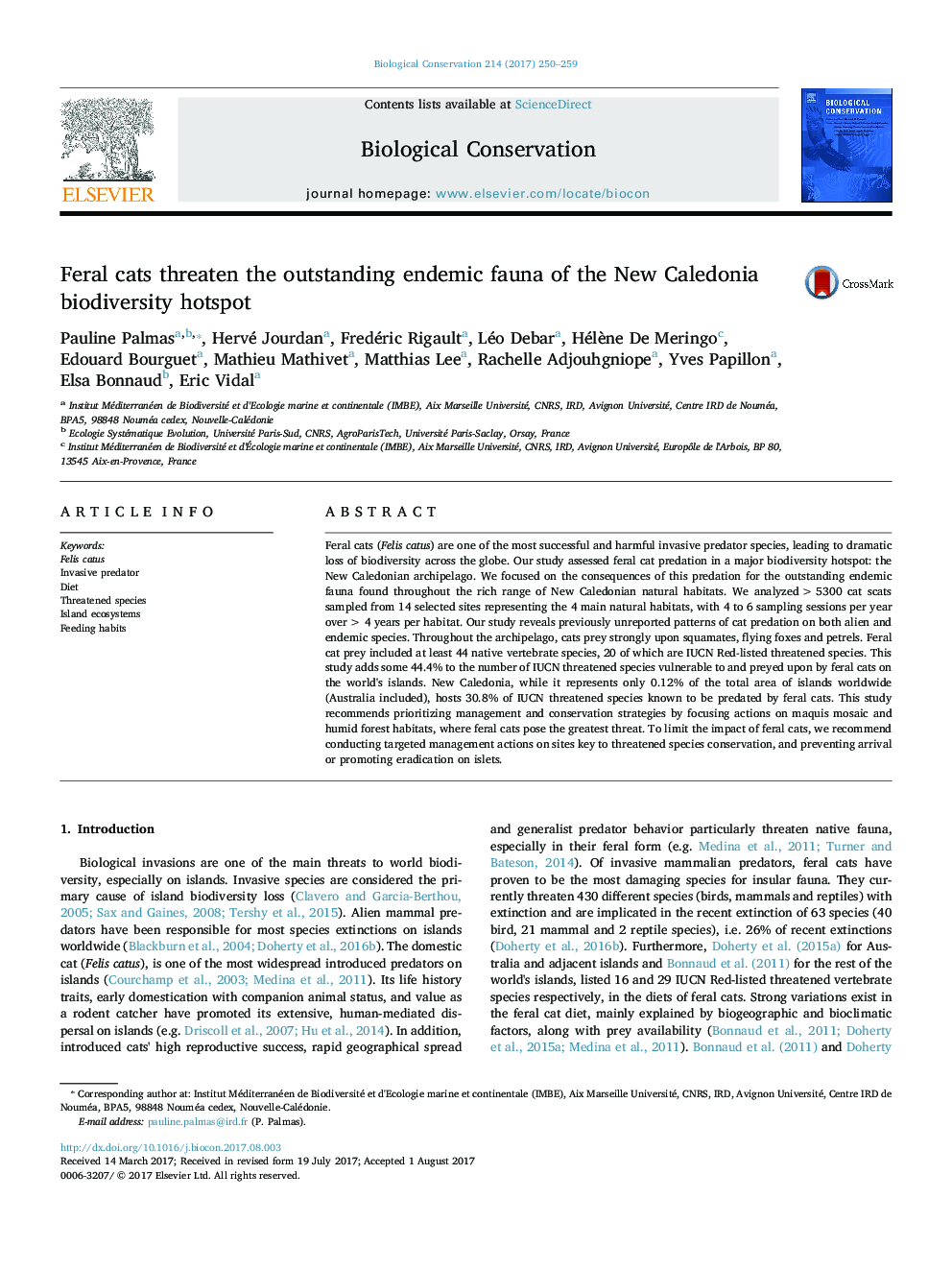| کد مقاله | کد نشریه | سال انتشار | مقاله انگلیسی | نسخه تمام متن |
|---|---|---|---|---|
| 5742951 | 1617891 | 2017 | 10 صفحه PDF | دانلود رایگان |
عنوان انگلیسی مقاله ISI
Feral cats threaten the outstanding endemic fauna of the New Caledonia biodiversity hotspot
ترجمه فارسی عنوان
گربه های مروارید از فون ناشناخته بومی کانادایی کالدونی جدید تهدید می کنند
دانلود مقاله + سفارش ترجمه
دانلود مقاله ISI انگلیسی
رایگان برای ایرانیان
کلمات کلیدی
موضوعات مرتبط
علوم زیستی و بیوفناوری
علوم کشاورزی و بیولوژیک
بوم شناسی، تکامل، رفتار و سامانه شناسی
چکیده انگلیسی
Feral cats (Felis catus) are one of the most successful and harmful invasive predator species, leading to dramatic loss of biodiversity across the globe. Our study assessed feral cat predation in a major biodiversity hotspot: the New Caledonian archipelago. We focused on the consequences of this predation for the outstanding endemic fauna found throughout the rich range of New Caledonian natural habitats. We analyzed >Â 5300 cat scats sampled from 14 selected sites representing the 4 main natural habitats, with 4 to 6 sampling sessions per year over >Â 4Â years per habitat. Our study reveals previously unreported patterns of cat predation on both alien and endemic species. Throughout the archipelago, cats prey strongly upon squamates, flying foxes and petrels. Feral cat prey included at least 44 native vertebrate species, 20 of which are IUCN Red-listed threatened species. This study adds some 44.4% to the number of IUCN threatened species vulnerable to and preyed upon by feral cats on the world's islands. New Caledonia, while it represents only 0.12% of the total area of islands worldwide (Australia included), hosts 30.8% of IUCN threatened species known to be predated by feral cats. This study recommends prioritizing management and conservation strategies by focusing actions on maquis mosaic and humid forest habitats, where feral cats pose the greatest threat. To limit the impact of feral cats, we recommend conducting targeted management actions on sites key to threatened species conservation, and preventing arrival or promoting eradication on islets.
ناشر
Database: Elsevier - ScienceDirect (ساینس دایرکت)
Journal: Biological Conservation - Volume 214, October 2017, Pages 250-259
Journal: Biological Conservation - Volume 214, October 2017, Pages 250-259
نویسندگان
Pauline Palmas, Hervé Jourdan, Fredéric Rigault, Léo Debar, Hélène De Meringo, Edouard Bourguet, Mathieu Mathivet, Matthias Lee, Rachelle Adjouhgniope, Yves Papillon, Elsa Bonnaud, Eric Vidal,
